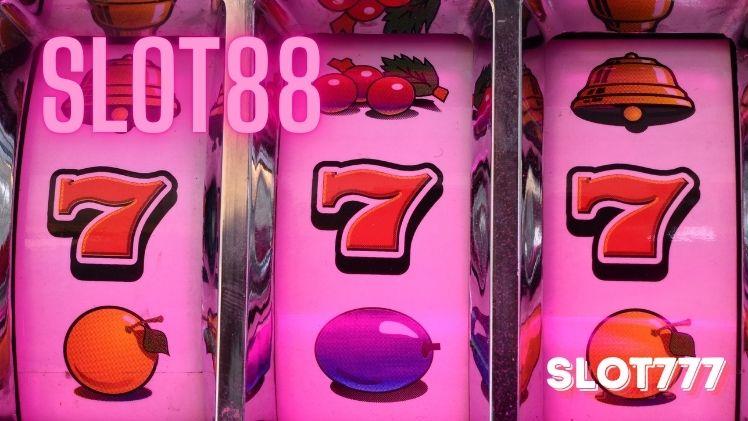The Science of Slot Machine Odds
Slot machines are one of the most popular forms of entertainment in casinos and gaming centers worldwide. The allure of jackpots, flashing lights, and the rhythmic sounds of spinning reels make these games irresistibly exciting. However, behind the scenes of every spin is a complex system of mathematics and probability that determines the odds of winning. Understanding how slot machines work can provide insight into the mechanisms that control these outcomes and why the house edge is so significant.
The Basics of Slot Machines
A slot machine is a game of chance where players place a bet, spin the reels, and hope to land on a winning combination. Traditional slot machines were mechanical, with physical spinning reels and symbols lined up to produce winnings. Modern video slots, on the other hand, are digital and rely on Random Number Generators (RNGs) to determine the outcomes.
RNGs are algorithms that generate a sequence of random numbers each time the reels are spun. These numbers correspond to specific positions on the virtual reels. The key point here is that every spin is independent of the last one, meaning there is no pattern to be detected. Whether you win or lose is purely a matter of chance, and the odds are programmed into the machine’s design.
The Odds and Probability
Several factors, including the number of symbols on each reel, the number of reels, and the payout structure, determine the odds of winning on a slot machine. Each symbol has a specific probability of landing on a pay line, and these probabilities are factored into the machine’s overall odds of hitting a winning combination.
Let’s consider a simple example. Imagine a slot machine with three reels and ten symbols on each reel. The probability of a single reel to land on a specific symbol is 1 in 10. If there are three reels, the probability of landing a specific combination of symbols (for example, three cherries) is the product of the individual probabilities. In this case, the odds of hitting that combination are 1 in 1,000 (1/10 * 1/10 * 1/10).
While this example is simplified, it demonstrates how the number of symbols on each reel and the number of reels directly impact the odds of a winning combination. In reality, most modern slots have many more symbols and pay lines, increasing the complexity of the odds calculation.
Paylines and Return to Player (RTP)
In traditional slot machines, a single pay line usually runs across the middle of the reels. However, modern video slots often feature multiple paylines, with some machines offering as many as 100 or more. Paylines are the specific lines on which symbols must appear to create a winning combination, and they can run horizontally, vertically, or diagonally across the reels.
The Return to Player (RTP) percentage indicates how much a slot machine will likely pay back over time. The RTP is calculated over millions or billions of spins, and it represents the average percentage of total bets that the machine will return to players in winnings. For example, if a slot machine has an RTP of 96%, this means that, on average, players will win back $96 for every $100 they wager. The RTP is built into the game’s odds and payout structure.
It’s important to note that RTP does not guarantee winnings on any individual spin. Since the odds of winning are random, a player could experience a long losing streak even on a machine with a high RTP. However, the RTP is a useful measure of how much a player can expect to win over an extended period of play.
House Edge and Slot Machine Design
The house edge refers to the built-in advantage that casinos have over players. This is the difference between the amount of money wagered by players and the amount the casino expects to pay out over time. The house edge varies by game, and in the case of slot machines, it is determined by factors such as the RTP, the number of pay lines, and the specific odds of winning on each pay line.
For example, if a slot machine has an RTP of 95%, the house edge is 5%. This means that, on average, the casino expects to keep 5% of the total money wagered while returning 95% to players in winnings. The house edge is crucial for the casino’s profitability, ensuring a consistent revenue stream.
While the house edge in slot machines may seem high compared to other casino games like blackjack or poker, Slot77 are designed to be engaging and entertaining. Their ease of play, low barrier to entry, and potential for large payouts create a compelling experience for players, even if the odds are stacked against them.
Conclusion
The science behind slot machine odds is based on probability, random number generation, and mathematical design. An RNG determines every spin of the reels, and the number of symbols, pay lines, and the RTP of the machine influences the odds of winning. Understanding these odds can give players a clearer picture of their chances of winning. However, it’s important to remember that slot machines are games of chance, and there is no surefire way to predict the outcome of any given spin.

Anika
I am Anika, the owner of Shayariforest.com, where I share heartfelt Shayari that reflects love and life’s emotions. Join me in exploring the beauty of poetry!







